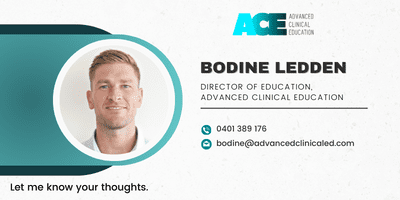The barrier or the goal?
For many people living with pain a structural narrative becomes tightly bound to their identity.
“I have two herniated discs,” “I have osteoarthritis,” “I have a torn rotator cuff.” “I have chronic pain”
Over time, these labels can become part of a person’s sense of self. The language used by clinicians, can inadvertently reinforce this identity of fragility, damage and dysfunction. This structural focus may then lead to avoidance behaviours, hypervigilance and negative mood contributing to a cascade of neurobiological events further increasing sensitivity and the complexity of a pain experience.
Why do some experience more pain than others when the same stimulus is applied? The key word here is experience. Pain is not simply a signal from damaged tissue. It’s a complex experience influenced by emotions, beliefs, attentional focus, past experiences, expectations and context. It’s an embodied phenomenon, shaped by the way we move, feel, think, and relate to the world.
Directing a person to focus on a painful area can increase sensation and heighten their awareness of pain simply by the labels or words that we use. On the other hand, guiding attention elsewhere or shifting attention to areas that are not associated with the site of pain may help to change their experience.

Try this for yourself…
Focus on your feet… You might feel things that you weren’t aware of before like the pressure of your shoes or socks, how your big toe feels, or how the skin on the bottom of your foot feels. Move your attention to your little toe, and then to the skin on the outside of your foot. It is interesting that simply by directing your attention to a particular part of your foot, you will become more aware of that sensory experience. Now do the same with your left hand (Stop reading and give it a go).
You will notice that when you focus on your hand, you can’t focus on your foot. You can’t focus on both at once. You can shift your attention quickly from one to the other, but you cannot focus on both at the same time. Simply by changing attention can increase or decrease a sensory experience in an area. Just as you cannot feel the shirt on your skin (until I mentioned it, now you might be more aware), this becomes desensitised shortly after putting it on. Interestingly, sensitisation is the opposite with increased attention and awareness. Consider how this might work in a clinical context for pain.
Helping patients become more aware of their body, not just the painful site, can be a powerful tool in reducing pain, shifting attention and dissociating pain with movement.
Consider an example of a person with back pain… “I have back pain when I stand up from my chair”. Could we influence a persons symptoms and movements simply through words and changes in attention?
Direct your focus to both of your feet, visualise a cockroach under each of your shoes. Both cockroaches are trying to escape, so you need to keep firm contact between the floor and the sole of your shoe. Now, you will need to put all of your weight through the floor to squash these cockroaches when you stand up. Can you try that now?
A simple change in attentional focus with a shift in language can be very powerful. There were no “activate your glutes”, “brace your core”, or keep your back straight” cues. All cues were externally focused, and not threatening, shifting attention away from their back and towards the goal.
Try and come up with a few of your own and try them out in your clinic. I am keen to hear what you come up with so let me know – I might even borrow some of yours!


